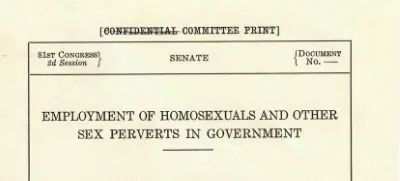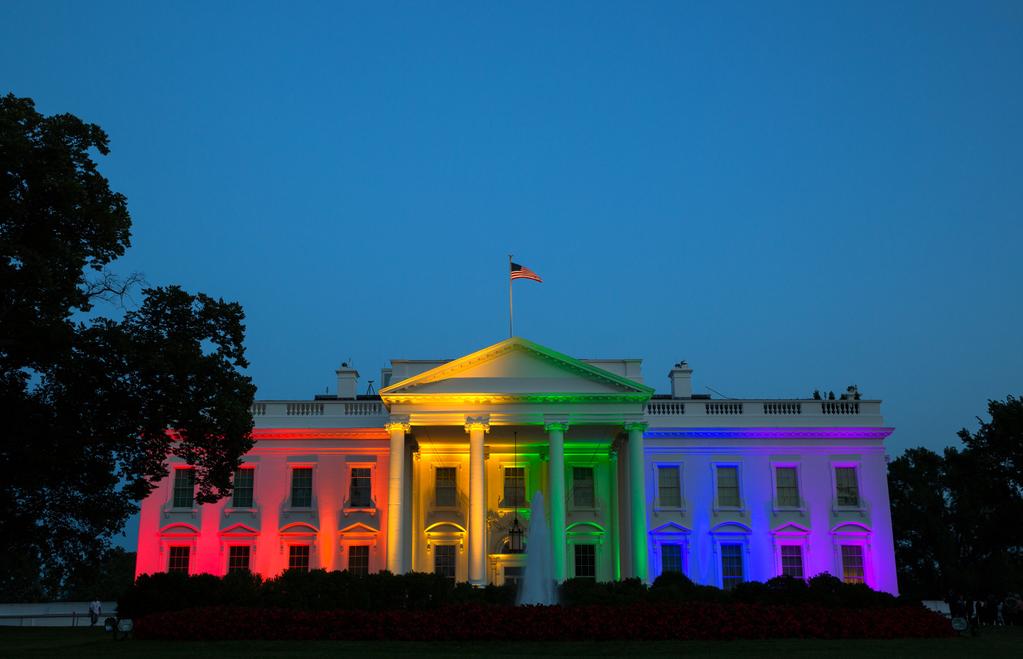
The History of Sexual Orientation Discrimination
June 11, 2018
The patchwork case law on sexual orientation discrimination poses major challenges for LGBTQ employees
Genevieve Carlton, Ph.D
Laws protect workers from racial discrimination in the workplace, unequal pay for equal work based on gender, and discrimination because of an employee’s religion. Under these laws, victims of discrimination can file a claim for wrongful termination, unequal pay, or a hostile work environment.
But what about discrimination because of sexual orientation? LGBTQ discrimination remains legal in many states. The history of sexual orientation discrimination laws shows how far we still need to go before LGBTQ employees across the country are protected in the workplace.
Sexual Orientation Discrimination Protections Are Relatively New

A U.S. Senate report in 1950 found that employing “homosexuals and other sex perverts” in the federal workforce threatened national security.
Workplace protections for LGBTQ employees were nonexistent before the 1980s. In fact, the federal government actively encouraged workplace discrimination. In 1950, the U.S. Senate investigated gay federal employees as a national security risk, and in 1953, President Eisenhower signed an executive order that banned homosexuals from the federal workforce. His order declared that “sexual perversion” made gay employees a security risk.
Until the 1970s, the federal government had not even consider legal protections for sexual orientation. In 1975, a group of Representatives from New York, California, and Pennsylvania introduced the first federal bill to protect gay rights. The bill banned discrimination in employment, education, and public accommodations on the basis of “affectional or sexual preference.” Congress never brought the bill up for a vote.
Starting in the 1980s, a small number of states stepped in where the federal government had not, passing laws banning discrimination on the basis of sexual orientation.
States Passed Laws Protecting Against Sexual Orientation Discrimination
As of 2018, twenty-two states and the District of Columbia have laws that protect employees from discrimination on the basis of sexual orientation and/or gender identity. But the laws vary widely. In 28 states, employers can fire people for identifying as LGBTQ, and in 30 states, employers can fire transgender employees.
New York state has been a leader in laws banning sexual orientation discrimination. In 1983, New York became the fourth state to provide sexual orientation discrimination protections for state employees, and in 2002, New York passed the Sexual Orientation Non-Discrimination Act (SONDA). LGBTQ New Yorkers are protected from discrimination in employment, housing, education, and the exercise of civil rights under SONDA.
New York City’s Human Rights Law provides additional protections. The law protects against discrimination on the basis of sexual orientation, in addition to race, age, gender, disability, marital status, partner status, caregiver status, and other protected categories.
Under these protections, if a New Yorker is fired for being gay, he or she can file a claim for discrimination.
Is Sexual Orientation Protected At the Federal Level?
At the federal level, can employers discriminate against employees because of sexual orientation? The answer is, unfortunately, complicated. In the executive branch alone, the past five years witnessed major changes and reversals for sexual orientation protections.
In 2014, under President Obama, the Department of Justice formally announced that the executive branch

After the 2015 Supreme Court ruling in Obergefell v. Hodges legalized gay marriage nationally, the White House was lit with rainbow colors.
would consider sexual orientation discrimination illegal under Title VII of the Civil Rights Act of 1964, which bans discrimination based on race, color, religion, sex, and national origin. The Attorney General, drawing on previous case law, argued that sexual orientation and transgender status are covered under Title VII’s sex discrimination protections. stating, “Although Congress may not have had such claims in mind when it enacted Title VII, the Supreme Court has made clear that Title VII must be interpreted according to its plain text . . . Title VII’s prohibition of sex discrimination is a strong and vital principle that underlies the integrity of our workforce.”
Similarly, in 2012 and 2015 the Equal Employment Opportunity Commission (EEOC), the organization that handles workplace discrimination, ruled that transgender status and sexual orientation are both covered by Title VII. Specifically, in a 2015 case, the EEOC ruled that sexual orientation discrimination was illegal under Title VII’s sex discrimination category.
But in 2017 the Trump administration Department of Justice broke with the precedent of the previous administration and declared that Title VII did not cover sexual orientation discrimination. The decision meant that the executive branch’s law enforcement agency would not stand against workplace discrimination on the basis of sexual orientation.
The Federal Court Split On Sexual Orientation Discrimination
In the judicial system, federal courts are split over whether discrimination laws cover sexual orientation.
Just in the past year and a half, the U.S. circuit courts split on the question of whether Title VII covers sexual orientation. The eleventh circuit, covering Alabama, Florida, and Georgia, ruled in 2017 that the Civil Rights Act does not cover sexual orientation. However, in 2018, the Second Circuit, covering Connecticut, New York, Vermont, ruled that Title VII does protect against sexual orientation discrimination. In 2017, the Seventh Circuit, based in Chicago, also ruled that sexual orientation discrimination is a form of sex discrimination.
In practice, that means workplace protections for LGBTQ employees vary widely depending on where they work.
The Future of Sexual Orientation Discrimination Laws
So does federal law protect against sexual orientation discrimination? The question remains complicated today, and in part it depends on where you live.
The EEOC argues that multiple federal court decisions support coverage of LGBTQ discrimination under Title VII. But with circuit courts and the Trump administration disagreeing, the question may have to wait for a Supreme Court review. The recent Masterpiece Cakeshop decision may look like a license to discriminate against gay customers, but the Supreme Court’s majority decision confirms “[religious] objections do not allow business owners and other actors in the economy and in society to deny protected persons equal access to goods and services under a neutral and generally applicable accommodations law.” However, the case does not touch the question of whether Title VII includes sexual orientation discrimination protections for employees.
For LGBTQ employees facing uncertain workplace discrimination protections, the contradictory federal rulings mean that state and local laws may provide the strongest protections against wrongful termination, harassment, and discrimination. Fortunately, residents of New York City have robust protections under federal, state, and city laws.
